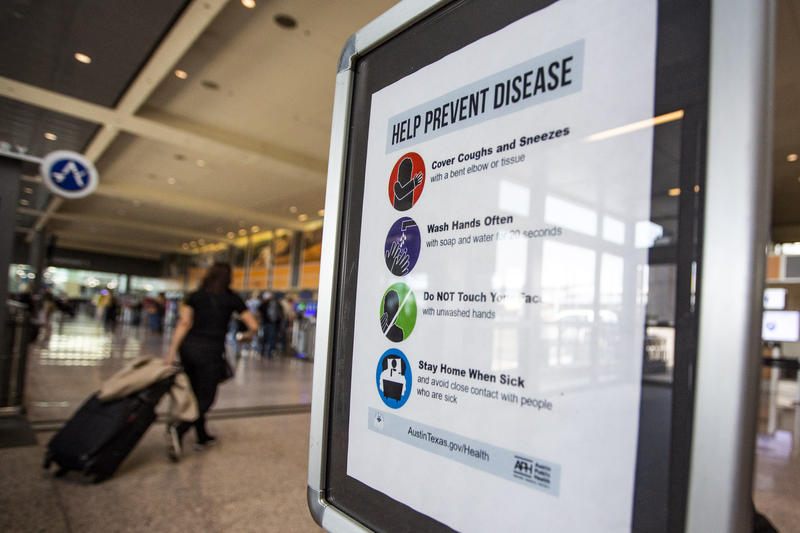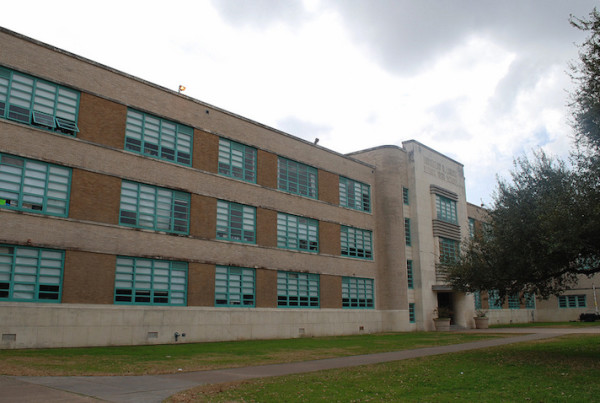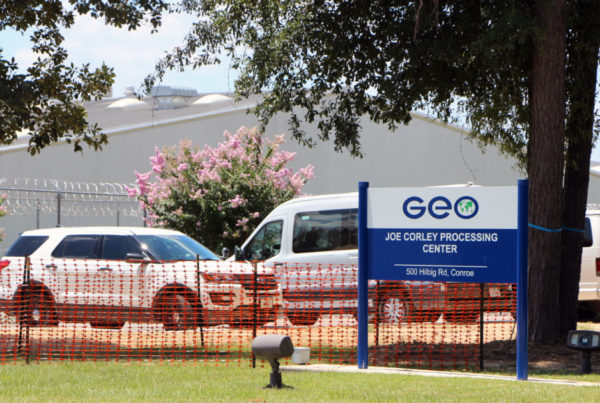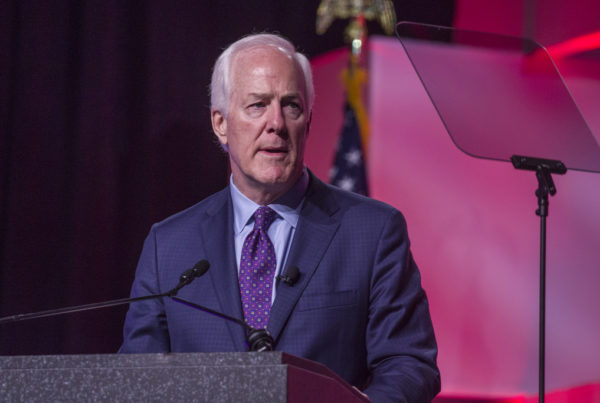From KUT:
One of the sectors that’s been hit hardest by the COVID-19 pandemic is the aviation industry. Even as activity perks up a bit, passenger traffic and flights at Austin-Bergstrom International Airport are a fraction of what they were this time last year.
The traffic decline has had wide-ranging impacts, leading to waning revenues, furloughs among concession workers and a slowdown to the airport’s ambitious expansion plans.
Fewer passengers, less revenue
Those heading to the airport for the first time in a while will see a lot of changes: mask requirements, hand sanitizer stations and extra cleaning crews. The adjustments mirror the steps airlines themselves are taking to ensure safety.
“They’ve actually been pretty good about how they handle the separation of the seats, the cleanliness,” said Michael Lynn, a passenger heading back from Austin to Virginia. “I feel comfortable.”
For some, traveling isn’t much of a concern.
“I’m not too worried about travel, but it is what it is,” said Teresa Prince, who was returning home to Michigan. “They’re doing a good job so far.”
But a lot of people are still reluctant to fly. Average passenger traffic at Austin-Bergstrom has dropped dramatically from 30,000 passengers last summer to around 5,000 now.
The traffic decline is having a ripple effect. It’s forcing the airport to cut $20 million from its budget this fiscal year, and Austin City Manager Spencer Cronk projects revenue for the airport will drop 30% in the upcoming fiscal year.
“Our revenue sources are aeronautical and non-aeronautical, and both of those depend on how many passengers are traveling through our terminals,” said Mandy McClendon, marketing and communications manager for the airport. “So that’s not only flights, it’s also parking and concessions and things like that.”
Workers impacted
The ripple effect impacts people who work at the airport, like restaurant workers and store clerks. UNITE HERE, a national hospitality workers union, says almost 96% of its airport membership in Austin was laid off at one point.
Guadalupe Garcia has worked as a cashier in the airport for more than a decade. Her seniority helped ensure she was able to keep her job. But as more employees have come back to work in response to a slow recovery in demand, her hours have been cut.
“They need money too, just the way we do,” she said. “It’s fair enough for everybody to get some hours. You know?”
Austin City Council directed the airport to work with concession companies to find ways to preserve jobs. The $58.7 million in federal coronavirus relief funding the airport received can only be used for operating expenses and paying down debt, but the airport has found other solutions.
Austin-Bergstrom has suspended fees that concession companies pay in order to operate at the airport, providing millions of dollars in relief. The airport is also waiving administrative costs for security badges once furloughed employees are rehired. And it’s exploring ways to expand technology to allow customers to pay for food or retail items through an app and have their purchases delivered to them wherever they are in the airport.
Airport leaders say that could help preserve jobs, but the union wants to make sure workers aren’t left behind.
“As we explore potential uses of technology, we have to ensure that this technology does not lead to further displacement of airport workers,” said Bo Delp, a political organizer with UNITE HERE. “We have to ensure, and the city must ensure, that as it moves forward with keeping passengers and workers safe, that it is doing so in a way that actually leads to additional jobs.”
Uncertainty remains about the aviation industry in the coming months. Some airlines have warned of massive furloughs or layoffs when federal coronavirus relief funding provisions end later this year. But analyst Mike Boyd projects that domestic travel could mostly rebound in Austin by the end of the year. In the meantime, he says airports are still at the mercy of decisions by airlines.
“It’s very difficult for an airport to plan when the schedule published by an airline today might not be there two weeks from now, or what they show today is half of what they’re going to have two weeks from now,” said Boyd, who is president of the aviation consulting firm Boyd Group International. “It’s going to be a balancing game.”
Ambitions grounded
Flights to Mexico have resumed at Austin-Bergstrom, but flights to Europe are suspended indefinitely. Those flights had been part of the airport’s ambitious expansion plans. The plans included a project to double the size of the terminal, but that is now on hold.
McClendon says even though it may take a few years for traffic to return to where it was in 2019, the 2040 Master Plan remains in place.
“We are confident that Central Texas passengers will want to travel again, and we’ll be there and ready to serve them when that happens,” she said. “Even if we don’t rebound quickly, we know that we will. And at that time, when that happens, we will be ready to move forward with those plans.”
Got a tip? Email Samuel King at samuel@kut.org. Follow him @SamuelKingNews.















